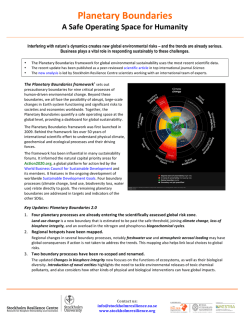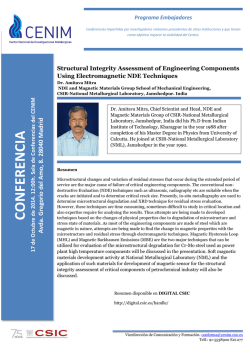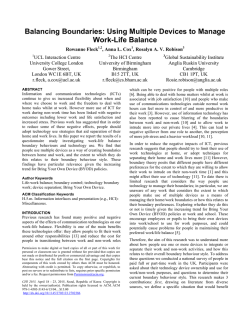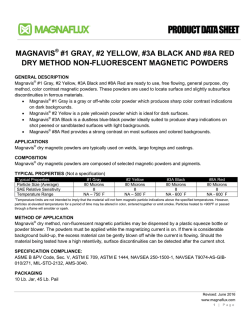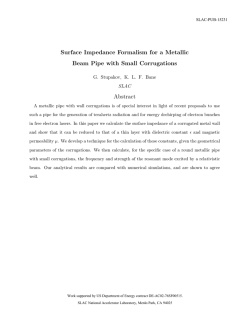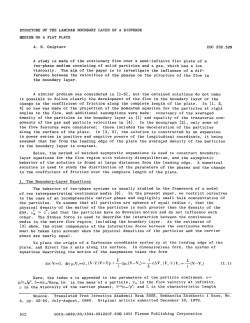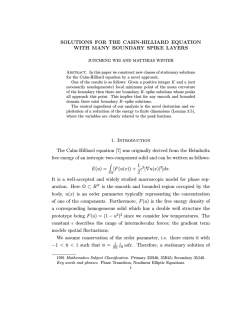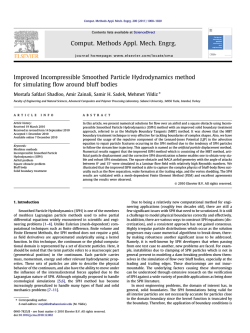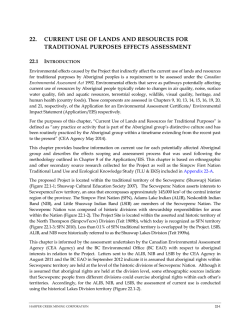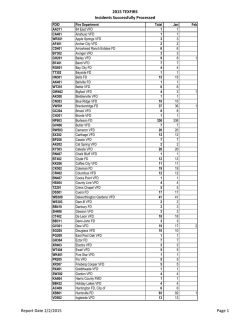
ESSENEITE
46th Lunar and Planetary Science Conference (2015) 2836.pdf INVESTIGATING A BURNING QUESTION: SEARCH FOR A PYROMETAMOPRPHIC MINERAL (ESSENEITE) AT THE K-PG BOUNDARY. B. P. Bauer1, E. E. Meyer1, J. R. Moore2, M. Sharma1, 1 Department of Earth Sciences, 6105 Fairchild Hall, Dartmouth College, Hanover, NH 03755, 2Honors College, MSC 06 3890,1 University of New Mexico, Student Health Building, Albuquerque, NM 87131. Introduction: The Cretaceous-Paleogene (K-Pg) Boundary mass extinction is widely considered to have been caused by a globally significant impact event with evidence recorded in both marine and terrestrial sedimentary rocks. This study focuses on a terrestrial record of the K-Pg boundary from the Hell Creek Formation in Montana, which offers the opportunity to study how terrestrial environments responded to a thermal plus caused by the reentry of ejected material. We hypothesized that, this thermal pluse, if intense, may have left mineralogical evidence in the terrestrial rock record. Melosh et al. [1] have reasoned that a soot layer found at the K-Pg boundary resulted from widespread wildfires. As gravitational attraction acted to pull material back into the atmosphere frictional heating of particles caused a thermal pulse. There is some debate about the intensity of this pulse [2-3]. For example, Kring and Durda [4] modeled the re-entry of ejecta and concluded that the thermal pulse–on the order of 150 kW m-2–would have been sufficient to ignite wet material on several continents. In contrast, modeling by Goldin and Melosh [5] demonstrated that the thermal pulse could not have been greater than 19 kW m-2 at any point. Even if the ejecta itself did not not have sufficient thermal energy to ignite plant matter, it could have desiccated vegetation which then could be ignited by lightning. However, Belcher and co-workers [2-3] argue that while the evidence for forest fires has been found within Cretaceous and Paleogene rocks of multiple ages, the amount of burnt material at the K-Pg boundary is lower than the typical amounts in either Cretaceous or Paleogene layers. Our initial investigation has focused on finding a rare type of pyroxene known as esseneite, which is formed at high temperature at low pressure via e.g., combustion of coal beds that results in fusion of sedimentary rock [6]. Its ideal chemical formula is CaFe3+AlSiO6. If a large-scale forest fires did occur at the K-Pg boundary, it is possible that esseneite is present in or near the K-Pg boundary layer deposited in non-marine settings. We have developed a procedure for finding this mineral in host rock samples. Samples and Methods: Our samples of the K-Pg boundary come from the Hell Creek Formation, MT, USA. The Hell Creek Formation consists of sandstones and shales interbedded with lignites. This is interpreted to indicate that the depositional environment was a coastal plain that developed during the retreat of the inland seas that covered parts of North America during the Cretaceous [7-8]. Our initial work has focused on extracting the mineral esseneite and associated magnetic grains. Previous research done on this topic has shown that the majority of magnetic minerals—spinels—have been found in the size range between 15 and 50 μm [5], so we have focused on extracting minerals in this size range using a Frantz Isodynamic Magnetic Separator that is modified to use with a powdered sedimentwater slurry. Results: Our initial work has yielded mixed results. We found a solitary esseneite spherule by processing several grams of K-Pg boundary layer (Fig. 1, Table 1). Additionally, we found that a majority of the grains in the magnetic fraction are titanomagnetites belonging to the solid solution series between ulvöspinel and magnetite (Figs. 2-3). . Conclusions: It is evident that esseneite is extremely rare at the K-Pg boundary and the morphology of one we did come across suggests its formation while being transported in air. It more likely represents fused sedimentary material excavated from Chixculub crater than material singed in ambient forest fire. Our results are only partially consistent with previous work done on magnetic minerals in K-Pg boundary rocks. Robin et al. [10-11] found a concentration of magnetic Ni-rich spinels at the K-Pg boundary, noting that high Ni concentrations (>1 wt %) and high Fe oxidation states are unique properties of spinels that form from melted extraterrestrial objects. Although we have found spinels in the K-Pg layer from the Hell Creek Formation, our methods have not shown that Ni is present in significant concentrations in the grains we have analyzed. The fact that we have not found esseneite grains produced from forest fires at the K-Pg boundary layer has several mutually exclusive implications. First, it could mean that the mineral simply was not formed by this event, because there was not a burning event or there were no coal beds nearby to produce it. Second, it is possible that esseneite is not magnetic at all, and is 46th Lunar and Planetary Science Conference (2015) 2836.pdf residing within the non-magnetic fraction of the samples we have processed. Third, since there is scant information on the EDS spectrum or crystal habit of esseneite, we may have overlooked it in our search. Fig. 3 Titanomagnetite from Hell Creek, Montana. Fig. 1. Possible esseneite spherule. Hell Creek Fm., Montana. Table 1. EDS composition of the esseneite spherule in Fig. 1 Fig. 2. Titanomagnetite from Hell Creek, Montana. References: [1] Melosh, H. J. (1990) Nature, 343, 251–254. [2] Belcher, C. M. (2009) Geology, 37, 1147-1148. [3] Belcher, C. M. et al. (2009) PNAS, 106, 4112–4117. [4] Kring, D.A. and Durda D.D. (2002) JGR, 107, 6–22. [5] Goldin, T.J. and Melosh, H.J. (2009) Geology, 37, 1135–1138. [6] Cosca, M. A., and Peacor, D. R. (1987) Amer. Mineral., 72, 148156. [7] Johnson, K. R. (2002) Geol. Soc. Amer., 361, 503-510. [8] Moore et al. (2014) Geol. Soc. Amer (Hello Creek Spec. Vol). [9] Kyte, F. T. and Bostwick, J. A. (1995) EPSL, 132, 113-127. [10] Robin, E. and Rocchia, R. (1998) BSGF, 3, 365-372. [11] Robin, E. et al. (1992) EPSL, 108, 181-190.
© Copyright 2026
